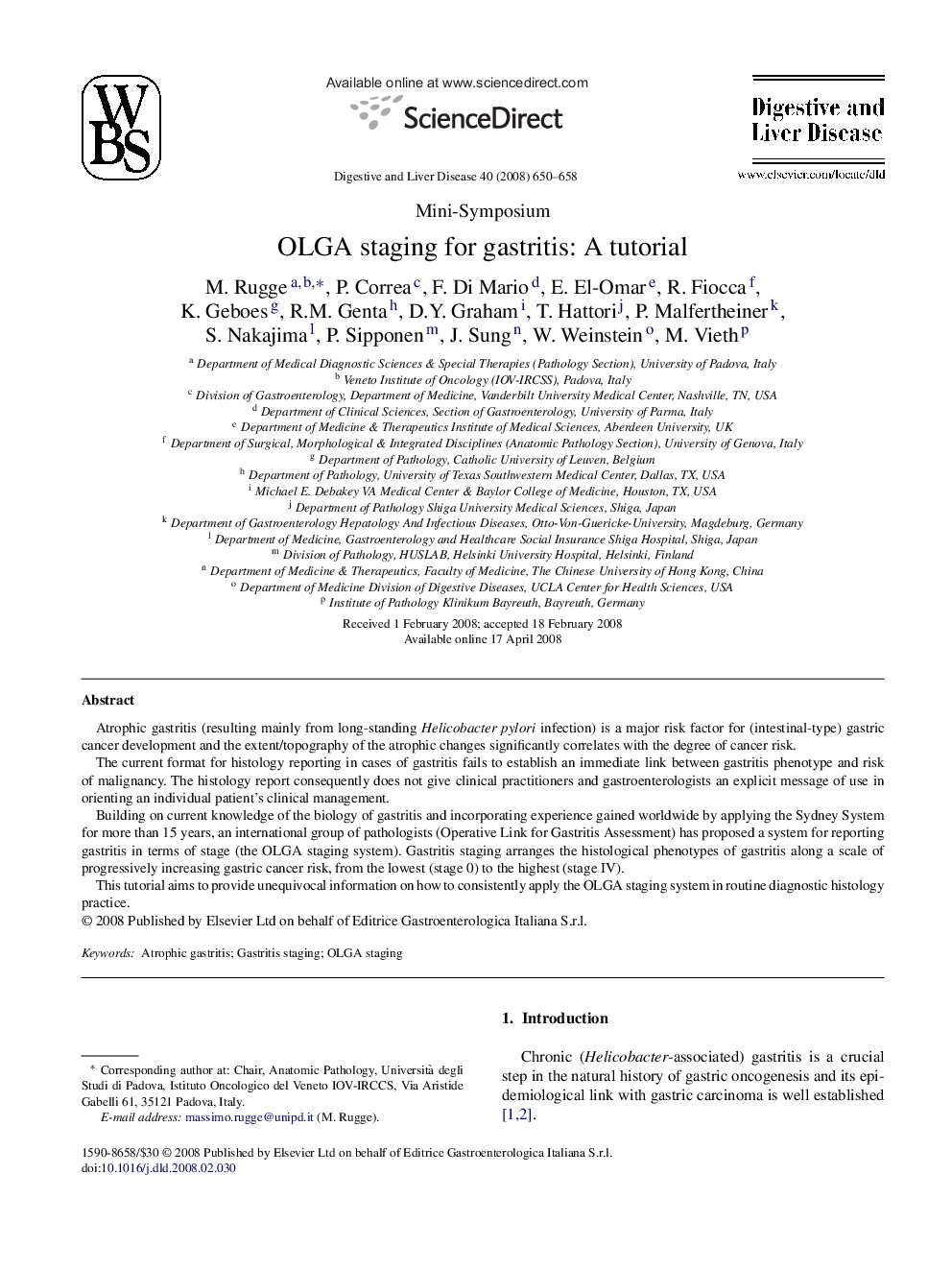| Article ID | Journal | Published Year | Pages | File Type |
|---|---|---|---|---|
| 3265987 | Digestive and Liver Disease | 2008 | 9 Pages |
Atrophic gastritis (resulting mainly from long-standing Helicobacter pylori infection) is a major risk factor for (intestinal-type) gastric cancer development and the extent/topography of the atrophic changes significantly correlates with the degree of cancer risk.The current format for histology reporting in cases of gastritis fails to establish an immediate link between gastritis phenotype and risk of malignancy. The histology report consequently does not give clinical practitioners and gastroenterologists an explicit message of use in orienting an individual patient's clinical management.Building on current knowledge of the biology of gastritis and incorporating experience gained worldwide by applying the Sydney System for more than 15 years, an international group of pathologists (Operative Link for Gastritis Assessment) has proposed a system for reporting gastritis in terms of stage (the OLGA staging system). Gastritis staging arranges the histological phenotypes of gastritis along a scale of progressively increasing gastric cancer risk, from the lowest (stage 0) to the highest (stage IV).This tutorial aims to provide unequivocal information on how to consistently apply the OLGA staging system in routine diagnostic histology practice.
